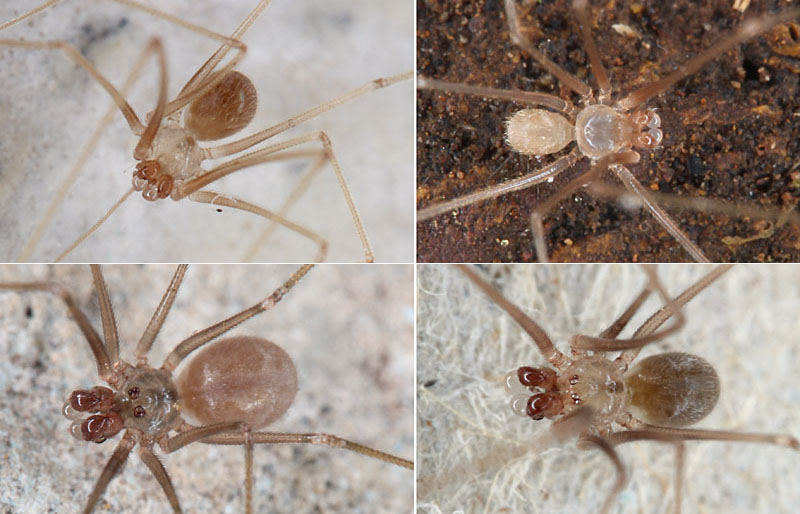At least three introduced species were found to be abundant on the two visited islands (Santa Cruz, Isabela): Modisimus culicinus, Smeringopus pallidus, and Physocyclus globosus. On Santa Cruz, we found strong evidence that the African S. pallidus is replacing or has replaced the native cave-dwelling Aymaria jarmila. On the same island, Modisimus culicinus seems to compete with the native Galapa bella, but in this case the impact seems still restricted to the area around the largest town, Puerto Ayora. The results have been published in the meantime (Huber & Acurio 2022)

 Only two species of Metagonia
had previously been known
from Galapagos: M. bellavista
(upper left) and M. reederi
(upper right). Since both are blind troglobites, they had been thought
to be relicts, i.e. with no epigean relatives on Galapagos. We were
surprised to find epigean representatives of Metagonia fairly abundant in
several places, with different new species on Santa Cruz (lower left)
and Isabela (lower right).
Only two species of Metagonia
had previously been known
from Galapagos: M. bellavista
(upper left) and M. reederi
(upper right). Since both are blind troglobites, they had been thought
to be relicts, i.e. with no epigean relatives on Galapagos. We were
surprised to find epigean representatives of Metagonia fairly abundant in
several places, with different new species on Santa Cruz (lower left)
and Isabela (lower right). 
In two caves on Santa Cruz we found the so far smallest known pholcid spider, a new species of Metagonia. Its body length is 0.75 mm, it is entirely blind and pale whitish except for the sclerotized male pedipalps. Results on Metagonia have been published in Huber et al. 2022.
 I The genus Galapa is
apparently restricted to
arid habitats like the one shown here near Garrapatero beach on Santa
Cruz. This
tiny spider occupies the same microhabitat as the introduced Modisimus culicinus, and it remains
to be seen if the latter will eventually occupy the entire island and
replace Galapa, as it already
does around Puerto Ayora. Newly collected specimens of Galapa were used in a revision of
the genus (Huber et al. 2024).
I The genus Galapa is
apparently restricted to
arid habitats like the one shown here near Garrapatero beach on Santa
Cruz. This
tiny spider occupies the same microhabitat as the introduced Modisimus culicinus, and it remains
to be seen if the latter will eventually occupy the entire island and
replace Galapa, as it already
does around Puerto Ayora. Newly collected specimens of Galapa were used in a revision of
the genus (Huber et al. 2024).I thank Andrea Acurio and Marta Romoleroux (Charles Darwin Research Station) for their help with preparations, permits, and logistics.
